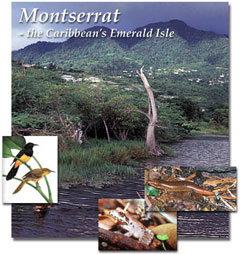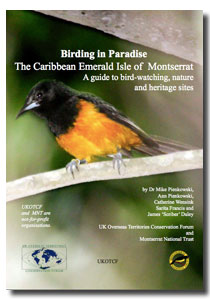| Montserrat:
Montserrat, one of the Leeward Islands in the Eastern Caribbean, lies 43 km SW of Antigua and 64 km NW of Guadeloupe. The volcanic island, 17 km long and 11 km wide, is mountainous, with streams and waterfalls amongst dense tropical vegetation. The rugged coastline offers no all-weather harbour, although several anchorages are sheltered by the island from the prevailing trade winds.
Montserrat is known as the Emerald Isle of the Caribbean due to a combination of historical Irish influences and the lush greenness of the landscape. The Montserrat National Trust, founded by ordinance in 1970, has been involved in activities aimed at conserving the natural and cultural heritage of Montserrat. On 18 July 1995, the Soufriere Hills volcano in the south of the island became active for the first time in 350 years. Increased pyroclastic activity killed 19 people on 25 June 1997. The capital, Plymouth, was destroyed after the Gages wall was overtopped in August 1997. Half of the island has been evacuated and much of it will probably remain uninhabitable for the next decade or more. The effects of the eruptions on the island's plants and animals are being studied where circumstances allow. Extensive monitoring of the Montserrat oriole - the National Bird - the mountain chicken and other important key indicator species, is ongoing. The Montserrat galliwasp has been sighted for the first time in over 30 years and more scientific research into habitat is necessary. Since volcanic activity began, the human population on the island has declined from approximately 11,000 to about 4,500. Volcanic activity has declined since March 1998. A sustainable development plan has been developed for Montserrat and it will be important to integrate environmental aspects into the island’s redevelopment. |
|
||||||||||||||||||||||
|
|||||||||||||||||||||||
 |
 |
 |
 |
 |
 |
 |
 |





